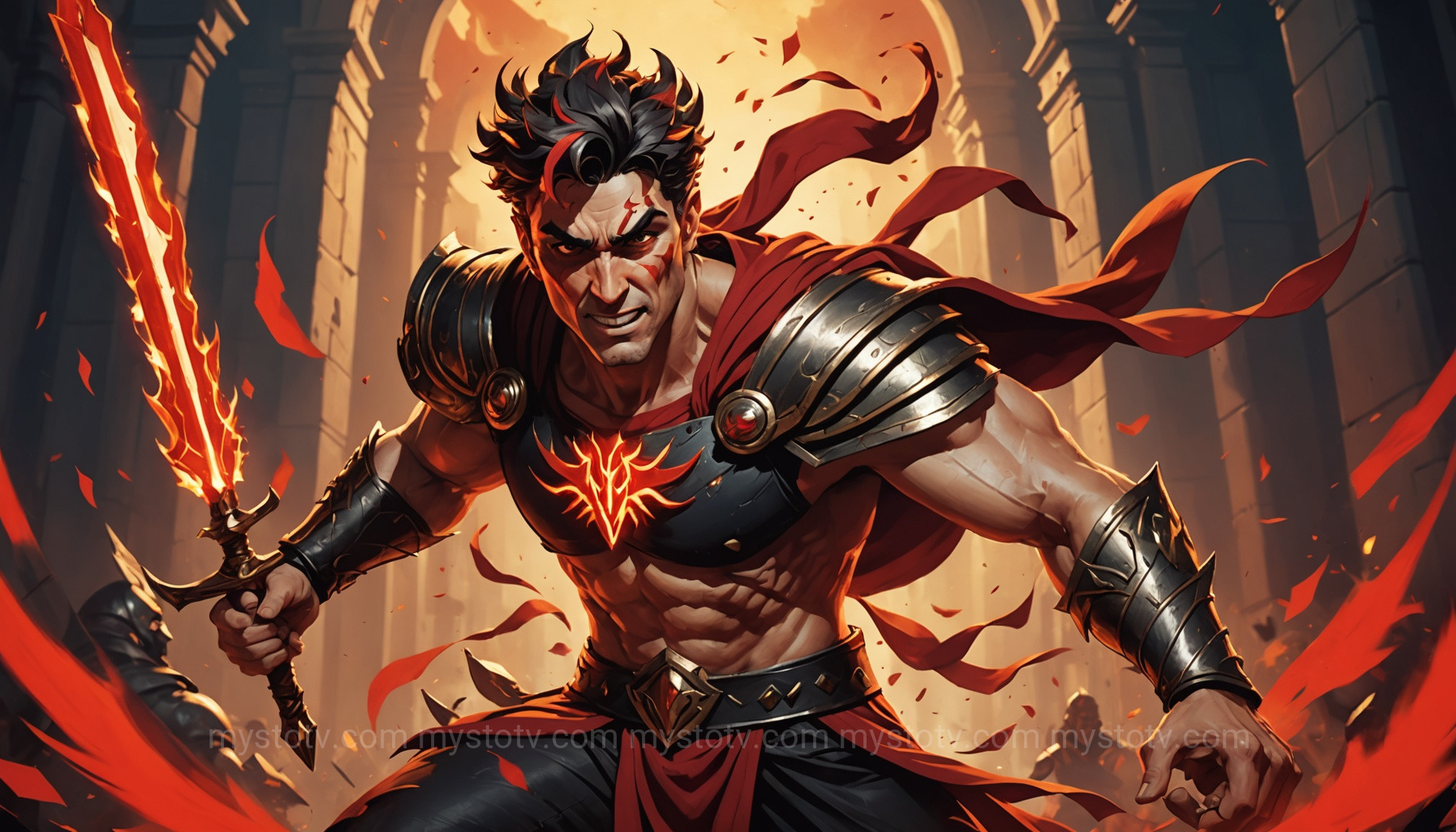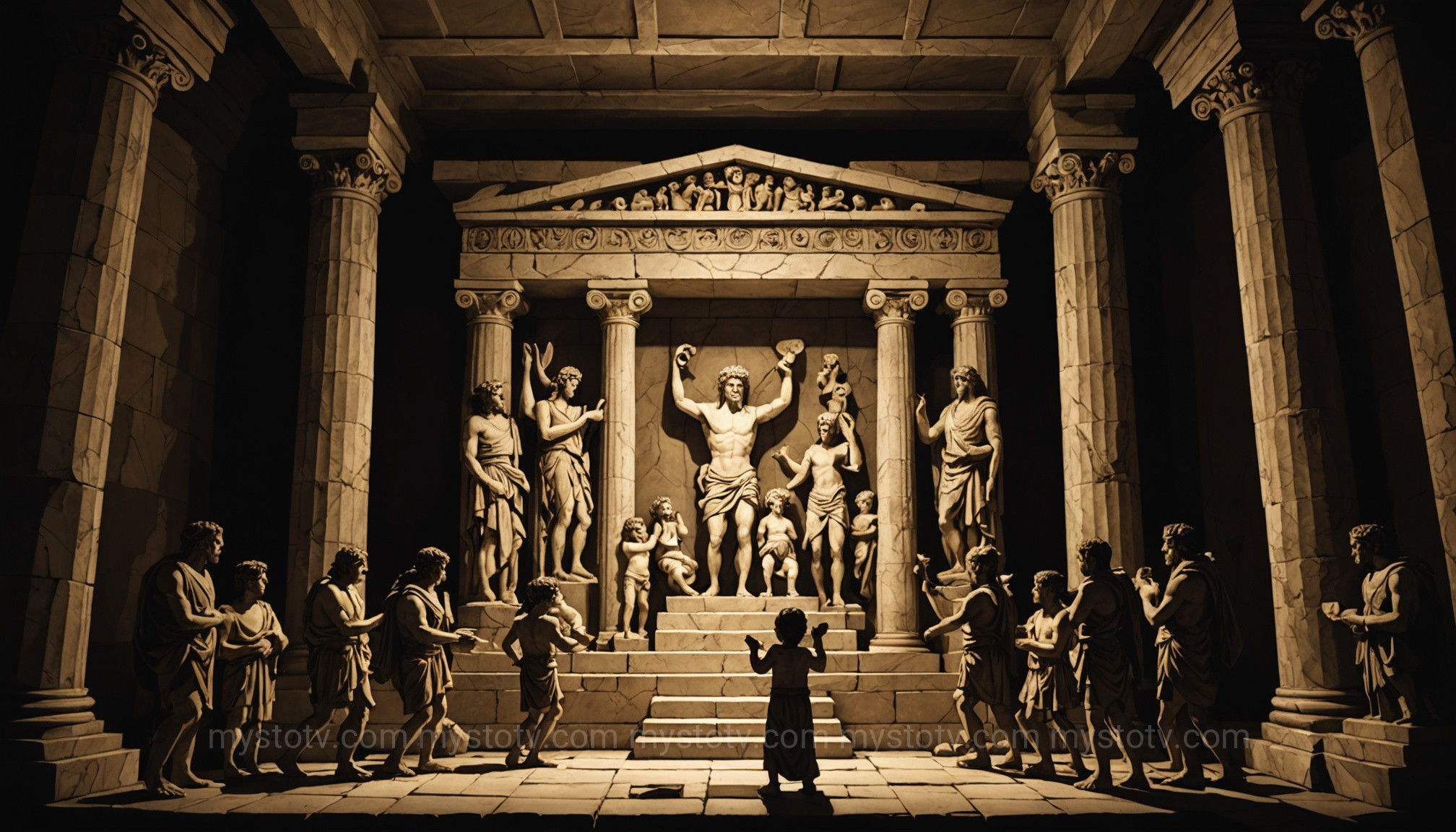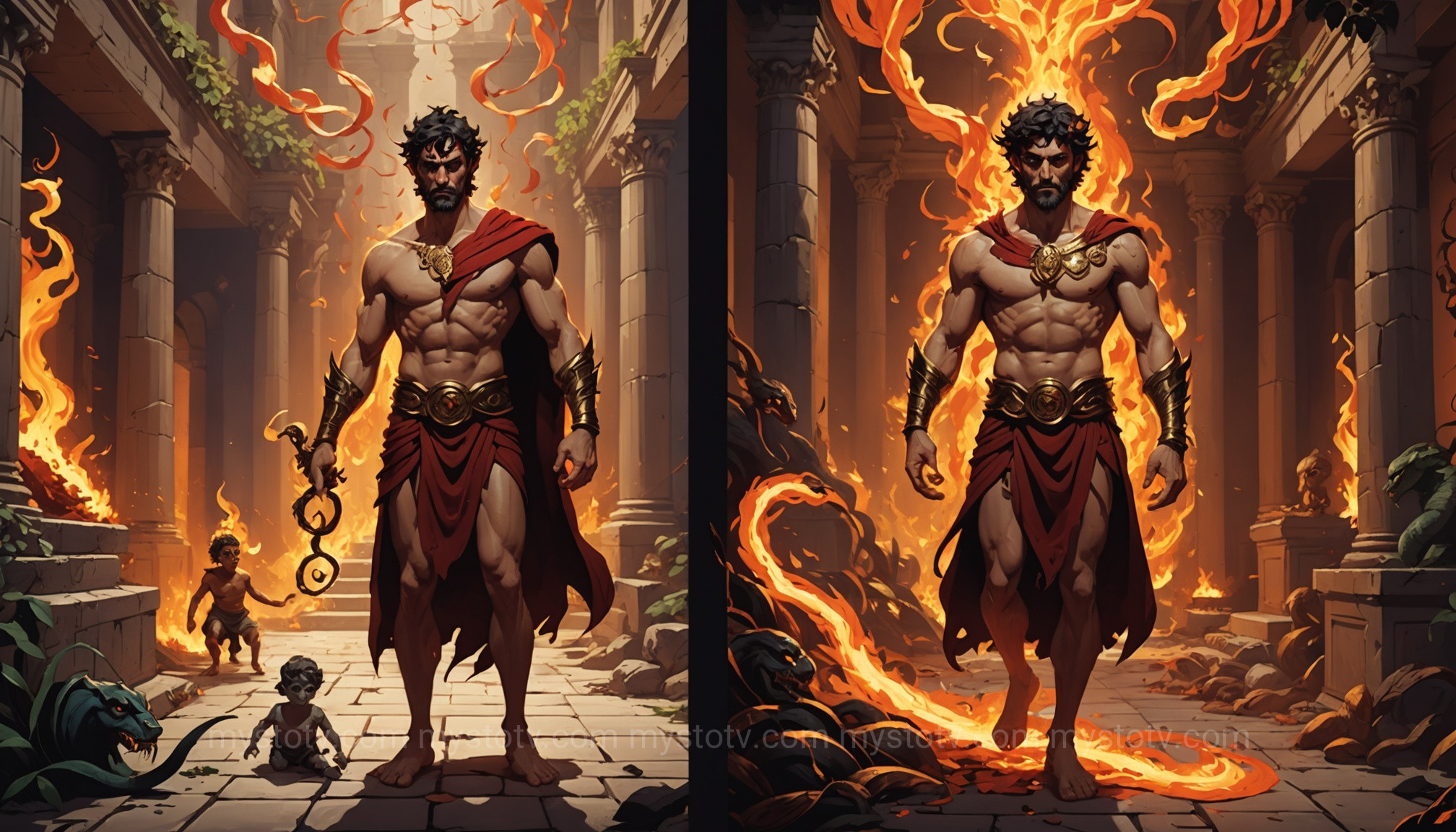I still remember the first time I booted up Hades. I was immediately drawn in by the stunning art, the sharp writing, and the addictive gameplay loop. But it was the protagonist, Zagreus, who truly captivated me. His sarcastic wit, his defiant struggle against his father, and his earnest quest to find his mother made for a deeply compelling character. Naturally, my curiosity piqued, and I dove headfirst into researching the "real" Prince of the Underworld. What I found was a fascinating, fragmented, and far more esoteric figure than the game presented. This journey revealed how a masterful adaptation can breathe new life into an obscure corner of ancient belief, creating a powerful dialogue between the game's narrative and the original zagreus greek mythology.
Contents
- 1 The Prince of the Underworld: Supergiant's Take on Zagreus vs. Greek Mythology
- 2 The Fragmented Truth: Uncovering the Real Zagreus Greek Mythology
- 3 A Tale of Two Princes: Comparing the Game's Hero with the Zagreus Greek Mythology
- 4 Creative Rebirth: Why Supergiant Games Reimagined Zagreus Greek Mythology
- 5 Frequently Asked Questions About Zagreus Greek Mythology
- 6 Conclusion: A Myth Reborn
- 7 References
The Prince of the Underworld: Supergiant's Take on Zagreus vs. Greek Mythology

In the world crafted by Supergiant Games, Zagreus is the rebellious son of Hades, Lord of the Underworld, and Persephone, the long-lost Queen of Spring. This parentage is the cornerstone of the game’s entire narrative. His defining characteristic is his relentless desire to escape his father's realm, a goal that players enact through countless attempts to fight their way through Tartarus, Asphodel, and Elysium. This version of Zagreus is charming, resilient, and deeply relatable, defined by a very human struggle: a dysfunctional family.
A Prince Defined by Family and Rebellion
The Zagreus of Hades is less a divine entity and more a beleaguered son trying to uncover a family secret and reunite with his mother. His interactions with the Pantheon of Olympus, who offer him boons to aid his escape, frame his journey as a rebellion against his grim, stoic father. His relationships with other denizens of the Underworld, like Nyx, Achilles, and Megaera, add layers of depth, revealing a character who, despite his chthonic origins, is capable of great warmth and loyalty. He is not a figure of cosmic importance but one of personal struggle. The stakes are not the control of the cosmos, but the healing of a fractured family.
The Gameplay Loop as Narrative for this Zagreus Greek Mythology
One of the most brilliant aspects of Hades is how it integrates gameplay with character development. The roguelite structure, where death is merely a temporary setback, perfectly suits a prince of the Underworld. Every "death" sends Zagreus back to the House of Hades, often to face his father's dismissive remarks. This cycle isn't just a mechanic; it's a narrative device that reinforces his immortality, his incredible persistence, and his ability to learn and grow stronger from his failures. This clever design makes the player's own journey of repetition and gradual mastery a direct reflection of Zagreus's character arc, a unique take on the theme of rebirth that is also central to the classical zagreus greek mythology, albeit in a very different context.
The Fragmented Truth: Uncovering the Real Zagreus Greek Mythology

When you leave the neon-drenched halls of Supergiant's Underworld and search for Zagreus in historical texts, you find a much more elusive and complex character. He is not a major player in the mainstream mythology of Hesiod or Homer. You won't find him chatting with Heracles or arguing with Apollo in the most commonly told tales. Instead, the historical zagreus greek mythology belongs almost exclusively to Orphism, a mystery religion in ancient Greece that offered its own unique cosmogony and theology separate from the state religion.
The Orphic Tradition and the First Dionysus
In the Orphic tradition, Zagreus is a figure of immense cosmic significance. He is not the son of Hades but the divine child of Zeus and his own daughter, Persephone, who Zeus tricked by taking the form of a serpent. In these myths, Zeus intended for Zagreus to be his heir, the future ruler of the entire cosmos. This places him on a completely different level from the game's angsty prince. He is sometimes referred to as the "first Dionysus," a divine predecessor to the more commonly known god of wine and revelry. His story is not one of family drama, but of divine succession, jealousy, and sacrifice.
The Dismemberment by the Titans
The central myth of Zagreus is a brutal and potent one. A jealous Hera, enraged by Zeus's infidelity and his plan to install Zagreus as the new king of the gods, incites the Titans to destroy the infant. They use white gypsum to paint their faces, ambush the child, and distract him with a set of toys, including a mirror, a ball, and knucklebones. While the infant Zagreus is entranced by his own reflection in the mirror, the Titans seize him, tear him limb from limb (an act known as sparagmos), and devour his flesh.
However, Athena manages to save the child's still-beating heart. She brings it to Zeus, who either swallows it himself or implants it into the mortal woman Semele. From this act, Dionysus is born anew. Zeus, in his fury, strikes the Titans with a thunderbolt, incinerating them. According to Orphic belief, humanity was then formed from the sooty ashes of these Titans. This myth is profoundly important: it suggests a dual nature for humanity, containing both the sinful, Titanic element (our body) and the divine, Zagreus-Dionysus element (our soul). The goal of the Orphic lifestyle was to purify the self and elevate the divine soul over the base body.
A Tale of Two Princes: Comparing the Game's Hero with the Zagreus Greek Mythology

Placing the game's hero alongside the mythological figure reveals just how much creative liberty Supergiant Games took. While they share a name and a connection to the Underworld, their stories, purpose, and theological weight are worlds apart. This comparison is key to understanding the adaptation's genius and its relationship with the original zagreus greek mythology.
Diverging Parentage and Purpose
The most significant change is parentage. In the game, making Zagreus the son of Hades and Persephone grounds the story firmly in the Underworld. It creates a clear, internal conflict: a child who embodies both the chthonic and the natural worlds, feeling like he belongs to neither. His purpose is personal and relatable: to understand his identity and heal his family.
The mythological Zagreus, as the son of Zeus and Persephone, has a cosmic purpose. He is the designated heir to the universe. His story is an etiology—a myth that explains the origin of something. In this case, it explains the dual nature of humanity and the cyclical nature of life, death, and rebirth that is central to both the Orphic religion and the cult of Dionysus. This contrast between the game and the original Zagreus Greek Mythology is the primary source of their different characterizations.
Themes of Death and Rebirth
Both versions of Zagreus are fundamentally tied to the concepts of death and rebirth.
- In Hades: Rebirth is a literal gameplay mechanic. Zagreus "dies" and is reborn in the Pool of Styx, ready to try again. His journey is a continuous cycle of failure and resurgence, a metaphor for persistence and the slow process of mending relationships.
- In Myth: Rebirth is a singular, cataclysmic, and theological event. Zagreus is brutally killed, but his essence (his heart) is saved, leading to the birth of a new god, Dionysus. This death and rebirth form the very foundation of a belief system about the soul's journey and its potential for divinity.
The game brilliantly translates a profound, one-time mythological event into an endlessly repeatable gameplay loop, allowing players to experience a form of this cyclical existence firsthand.
Creative Rebirth: Why Supergiant Games Reimagined Zagreus Greek Mythology
The decision by Supergiant Games to radically alter the myth wasn't an act of ignorance, but one of profound creative insight. The fragmented and obscure nature of the original myth provided a unique opportunity. They didn't have to contend with centuries of established, popular portrayals like they would have with a figure like Heracles or Achilles. The very obscurity of the zagreus greek mythology gave them a canvas on which to paint a new, more emotionally resonant story.
Filling in the Mythological Gaps
Zagreus exists in a handful of contradictory fragments from antiquity. In some sparse references, he is called a "chthonic Dionysus" or even identified with Hades himself. This ambiguity is a storyteller's dream. Supergiant Games saw these gaps not as a problem, but as an invitation. They could pick and choose elements—the name, the connection to the Underworld, the theme of rebirth—and weave them into a coherent and compelling narrative fabric of their own design.
Narrative Cohesion and Emotional Resonance
By making Zagreus the son of Hades, the developers created a story that was self-contained, thematically tight, and emotionally powerful. The cosmic drama of the Orphic myth, with its divine politics and complex theology, is fascinating but less accessible for a modern audience seeking a character-driven experience. A story about a son who feels misunderstood by his father and yearns for his absent mother is universal. It allowed the writers to explore themes of family, communication, and forgiveness with a depth that would have been difficult if they had stuck to the original myth of Zagreus as Zeus's ill-fated heir. The game became a story about the gods, but a story with a very human heart.
Frequently Asked Questions About Zagreus Greek Mythology
- Is Zagreus a real Greek god?
- Yes, but a very obscure one. He was a real figure within the specific context of the Orphic mystery cults, where he was considered a major deity, the son of Zeus and Persephone, and the "first Dionysus." He was not, however, a part of the mainstream Olympian pantheon that most people are familiar with.
- Why is the Zagreus myth so obscure?
- The Orphic religion was a "mystery cult," meaning its central doctrines and rituals were kept secret from non-initiates. Unlike the public myths of Homer, the story of Zagreus was part of a private, esoteric tradition. Most of what we know comes from fragmented quotes by later Christian and Neoplatonist writers who were often commenting on or critiquing these beliefs, not preserving them directly.
- Are there any other interpretations of Zagreus in Greek mythology?
- Yes, the sources are often contradictory. While the Zeus/Persephone parentage is the most detailed story we have from Orphism, some earlier, fragmented texts mention a "Zagreus" who is a chthonic (underworld) companion of Gaia, and some later writers even identified him directly with Hades. This ambiguity is precisely what made him such a perfect character for creative reinterpretation in the game Hades.
Conclusion: A Myth Reborn
The journey from the charming prince in Hades to the sacrificed god of the Orphic cults is a lesson in the power of adaptation. Supergiant Games did not simply retell an old story; they resurrected an obscure name and gave it a new, beating heart. They transformed the esoteric zagreus greek mythology into a personal, poignant, and universally resonant narrative. The game's Zagreus doesn't erase the mythological one; instead, it shines a spotlight on a forgotten corner of ancient belief, encouraging thousands of players to ask the same questions I did and discover the fragmented, mysterious truth for themselves. In doing so, Hades ensures that the name Zagreus, in both its ancient and modern forms, is anything but dead.
References
- Hard, Robin. The Routledge Handbook of Greek Mythology. Routledge, 2004.
- "Zagreus." Theoi Project, edited by Aaron J. Atsma, 2017. https://www.theoi.com/Georgikos/Zagreus.html
- Guthrie, W. K. C. Orpheus and Greek Religion: A Study of the Orphic Movement. Princeton University Press, 1993.